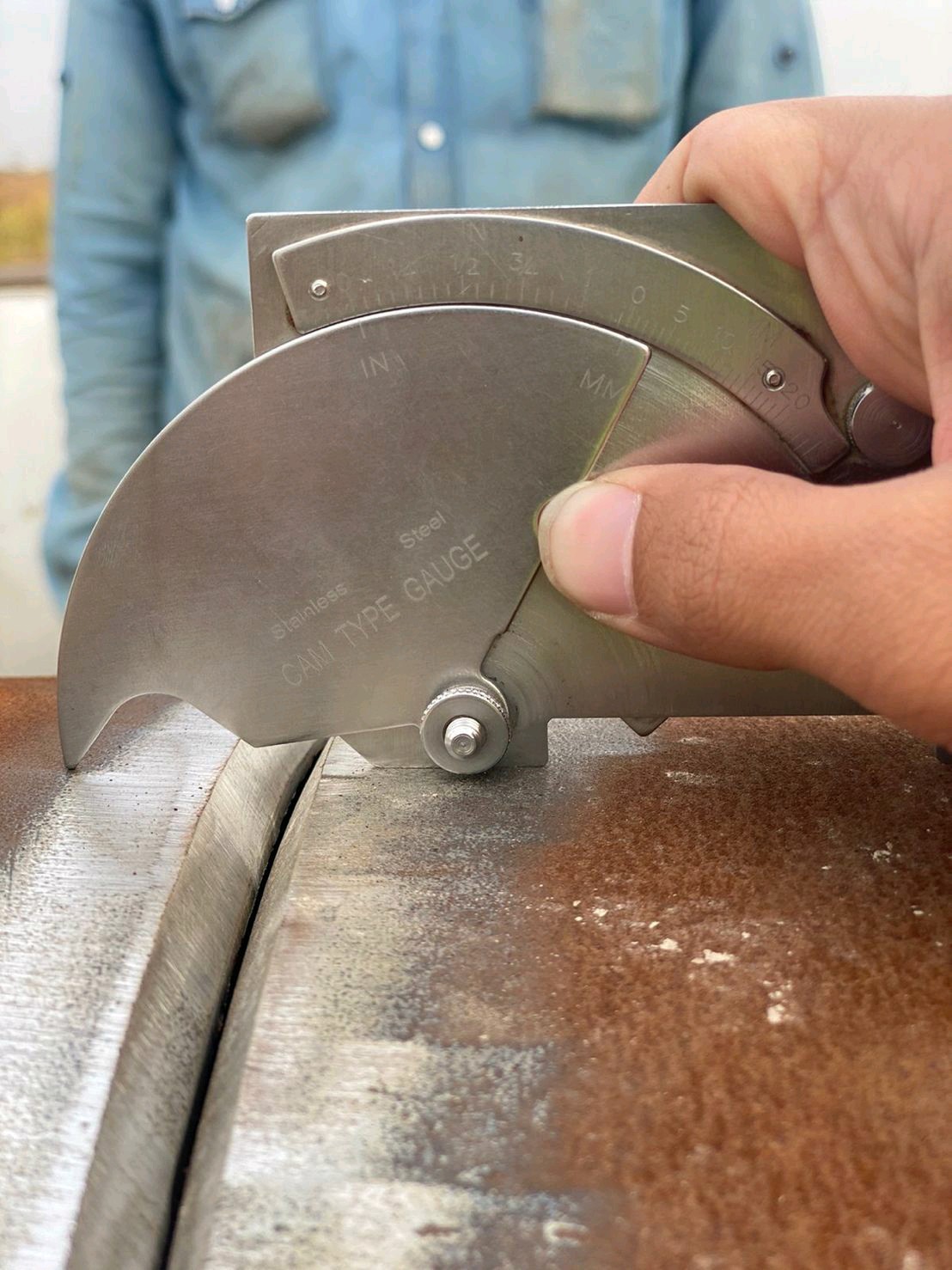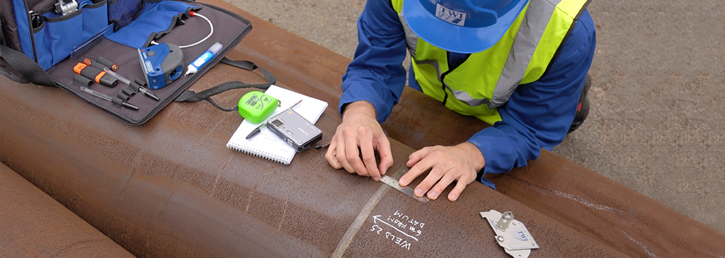How Welding Inspection Madison Makes Certain Quality and Safety And Security in Fabrication
How Welding Inspection Madison Makes Certain Quality and Safety And Security in Fabrication
Blog Article
Exploring Advanced Equipment and Approaches for Accurate Welding Examination
In the realm of welding inspection, the pursuit of accuracy and dependability is extremely important, stimulating the development of cutting-edge tools and techniques. Laser scanning developments and computerized examination systems, geared up with fabricated intelligence, are redefining the landscape by reducing human mistake and boosting security procedures.
Ultrasonic Checking Developments
Ultrasonic testing developments often represent the center of improvements in welding evaluation technologies. These technologies have actually dramatically enhanced the ability to find and evaluate interruptions within welded structures, guaranteeing boosted honesty and safety and security - Welding Inspection Madison. Ultrasonic screening employs high-frequency acoustic waves to penetrate products, supplying in-depth info about internal features without triggering damage. The current growths in this field have actually concentrated on increasing precision, speed, and the capability to translate complicated data.

Furthermore, innovations in software program formulas for information analysis have actually improved the accuracy of defect detection and sizing. Automated ultrasonic screening systems currently use high-resolution imaging, enabling thorough assessments of weld high quality. These systems are usually incorporated with innovative visualization devices, which help with the analysis of results.
Radiographic Examination Methods
While ultrasonic testing innovations have actually established a high criterion in non-destructive evaluation, radiographic evaluation methods continue to play an essential function in welding examination by supplying special insights into material honesty. Radiographic testing (RT) uses using X-rays or gamma rays to penetrate products, developing a radiograph that aesthetically represents the internal framework of a weld. This imaging ability is very useful for finding subsurface problems such as porosity, additions, and fractures that might not show up with surface evaluations.
The procedure includes positioning a radiation resource on one side of the weld and a detector on the opposite side. Variants in material thickness and density impact the attenuation of the rays, producing a contrasting photo that precisely delineates imperfections. RT is particularly helpful for checking intricate geometries and thick sections where other methods may fall brief.
Regardless of its efficiency, radiographic inspection should be performed with stringent adherence to safety procedures as a result of the dangerous nature of ionizing radiation. Moreover, the analysis of radiographs calls for proficient personnel, as the quality of the analysis straight influences the integrity of the assessment. Continuous innovations in electronic radiography are improving picture clarity and analysis efficiency, strengthening RT's vital duty in making sure weld quality.
Laser Scanning Advancements
Embracing laser scanning modern technology in welding inspection has revolutionized the analysis of weld quality and integrity. Unlike traditional assessment methods, laser scanning gives rapid information acquisition, significantly improving the performance and accuracy of weld analyses.
Laser scanning breakthroughs have actually caused significant renovations in discovering and characterizing surface area defects such as porosity, absence of combination, and damages. The high-resolution data makes it possible for inspectors to carry out extensive evaluations, ensuring that welds satisfy rigid sector criteria. Moreover, over here this method sustains the advancement of electronic records, assisting in long-term quality control and traceability.
In addition, laser scanning technology incorporates perfectly with software application services designed for automated defect discovery and evaluation. The resultant data can be easily shared and examined, advertising joint decision-making procedures. As sectors proceed to demand greater requirements for weld high quality, laser scanning continues to be at the forefront, using unrivaled precision and effectiveness in welding inspection.
Automated Inspection Solutions

Automated examination systems use the benefit of consistency, eliminating human error and subjectivity from the inspection procedure. They are made to operate in different atmospheres, from manufacturing floors to remote area websites, making certain extensive coverage. Welding Inspection Madison. These systems can be programmed to comply with certain welding requirements and criteria, offering thorough records and documents for high quality control functions
Furthermore, the integration of cloud-based platforms facilitates the storage space and analysis of large amounts of inspection information. This makes it possible for trend analysis and anticipating upkeep, allowing suppliers to resolve prospective issues before they intensify. The fostering of automatic evaluation systems is a critical move towards enhancing the integrity and efficiency of welding processes in industrial applications.

Enhancing Security and Effectiveness
A considerable see this website facet of enhancing safety and security and efficiency in welding evaluation hinges on the combination of innovative technologies that simplify procedures and alleviate risks. The fostering of advanced non-destructive testing (NDT) techniques, such as ultrasonic screening, phased array ultrasonic screening (PAUT), and radiographic screening, plays a pivotal role in ensuring structural integrity without jeopardizing the security of the personnel entailed. These techniques enable comprehensive inspections with marginal downtime, lowering potential dangers connected with traditional methods.
Furthermore, the implementation of real-time information analytics and machine understanding formulas here are the findings has transformed the means assessment information is analyzed. By employing anticipating analytics, prospective defects can be identified prior to they manifest right into essential failings, making sure timely treatments and maintenance. This positive approach significantly boosts operational performance and security in welding procedures.
Moreover, remote inspection innovations, including drones and robotic spiders equipped with high-resolution electronic cameras, allow inspectors to evaluate hard-to-reach locations without exposing them to hazardous conditions. This not only boosts assessment precision however also minimizes human threat. By leveraging these innovative devices and techniques, sectors can achieve greater safety and security criteria and functional performance, eventually causing more reliable and lasting welding evaluation practices.
Verdict
The integration of sophisticated devices and approaches in welding examination substantially enhances issue detection and makes certain architectural integrity. These improvements not just boost inspection performance however also contribute to enhanced safety and security and quality assurance in commercial welding applications.

Ultrasonic screening developments frequently stand for the leading edge of innovations in welding examination modern technologies.While ultrasonic testing innovations have established a high criterion in non-destructive evaluation, radiographic inspection techniques continue to play an essential function in welding inspection by offering distinct understandings right into material honesty.Accepting laser scanning modern technology in welding evaluation has revolutionized the analysis of weld quality and stability. As sectors continue to demand higher requirements for weld top quality, laser scanning continues to be at the center, using unparalleled precision and efficiency in welding assessment.
Automated evaluation systems provide the advantage of uniformity, getting rid of human error and subjectivity from the examination process.
Report this page